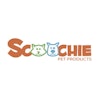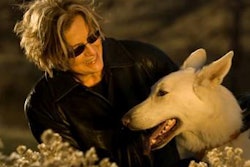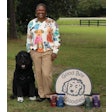Pet obesity is a steadily rising problem in the US and other developed markets; according to the latest study from the Association for Pet Obesity Prevention (APOP), 52.6% of US dogs and 57.6% of US cats are overweight or obese. Fortunately, apps are available to help pet owners trying to control their furry loved ones’ weight.
Of course, the first step is getting pet owners to recognize the problem: APOP’s survey, which tracked veterinarians’ assessments of their patients’ weight, showed an astounding 93% of dog owners and 88% of cat owners believed their pets were in the normal weight range. Studies in the UK by the Pet Food Manufacturers’ Association (PFMA) indicated a sadly similar disconnent: 77% of UK veterinarians believe up to 45% of all pets they see are overweight, yet 63% of pet owners say their pets are the correct weight.
No app, no matter how slick or helpful it may be, can get someone to use it unless they really want to. But for pet owners who have reached that point of concern about their pets’ weight, at least two apps could provide a significant resource.
I’m singling out these two apps – there are other pet nutrition apps available – because I’m impressed by the research and knowledge behind them. That’s especially true for the Fat Dog Diet, an iPhone app created and administered by Patty Khuly, VMD, a small-animal veterinarian based in Florida who has long blogged about pet health and the veterinary profession. A couple years ago, she turned her focus to what she considers the “single most significant pet health issue of our day.”
The Fat Dog Diet app is based not only on Khuly’s experience as a practicing veterinarian but also on published studies on canine obesity as well as her own extensive research and compilation of dog foods on the market and their caloric content, among several other nutritional values.
Further – what might be even more helpful in the long run – Khuly is using the app as a research tool itself, saying she designed it to capture data from pet owners to study “how the effectiveness of a mobile application designed for canine weight loss compared to more traditional methods.” The first step in that, she added, is to quantify the overall efficacy of the app, which is why the app (and Khuly herself) encourage users to share data and experiences on their dogs’ weight loss. The app even includes a weekly alert to help streamline the process and boost compliance.
The other app, SlimDoggy, was developed by technology experts and passionate dog owners rather than animal health professionals. However, the founders, Steve and Kate O’Brien, say they did base the app on published research and that they did their own comprehensive research and consulted with several veterinarians to refine their methodologies and ensure their approach was sound.
What’s unique about this app is that it allows dog owners to find petfoods based on the inclusion – and exclusion – of specific ingredients, pulling from an extensive database of dog food data. “We researched and collected, by hand, food calories and ingredient lists for almost 2,000 dog foods and treats to compile the most extensive dog food database currently available with ingredients and comparison data so that you can really examine what you are feeding your dog,” the website says.
The database, which now comprises over 3,000 dog foods, also includes a ranking feature, which I believe could lead dog owners away from research- and science-based selections into ones based solely on the opinions of a few people not educated or trained in companion animal nutrition – and goodness knows there are already plenty of opinion-based petfood rating sites out there. But aside from that, this app, like the Fat Dog Diet, seems to offer dog owners a helpful tool.
But what about cats, particularly since they are even more likely to be overweight or obese? The O’Briens have just launched a companion site, SlimKitty.com, yet to date it does not include a database of cat foods and their ingredients. (The announcement of the new site says that database will soon be released and comprise over 1,000 cat foods at the start.)
Similarly, I know Khuly envisions launching a Fat Cat Diet app at some point. I have heard her say at pet trade shows that this endeavor is more difficult to get right; because of cats’ unique physiology and nutrient needs, it’s much harder to offer a simple, technology-based way for cat owners to find the right food (s), caloric amounts and other nutritional information for each of their cats. And perhaps her research project with the Fat Dog Diet app is consuming all her resources.
Let’s hope she or others crack the code soon on offering helpful tools to owners of overweight or obese cats, including yours truly!


















